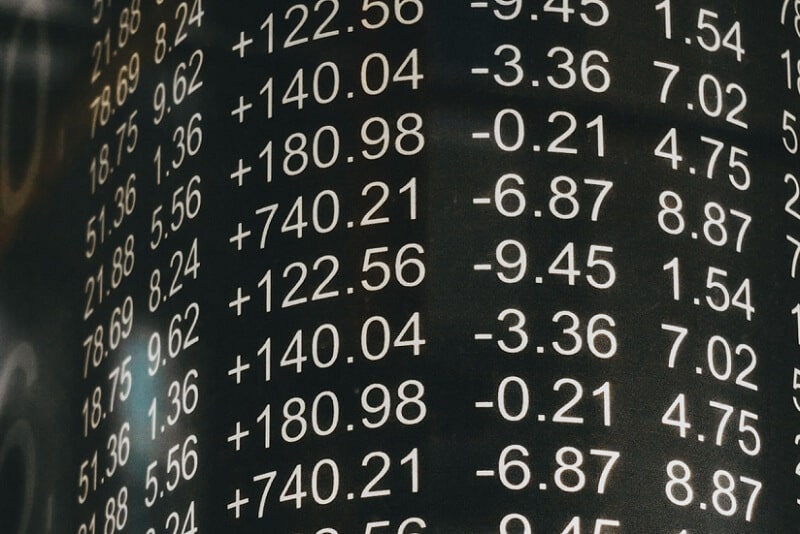
Asset allocation is one of the most efficient investment strategies. The percentage allocation shows the level of risk and the expected return. What if the numbers are negative?
By Guy Avtalyon
If you wonder how it is possible to have negative numbers in asset allocation we will say the shorting on the asset may cause that.
For example, you have a long-short strategy with two classes only: equity long, and equity short. You can be sure that an equity short class will have negative numbers in asset allocation because all short investments are allocated under this class.
Asset allocation is important because it is an individual investment strategy. The numbers of stocks, bonds, commodities, cash show the level of risk and hence, how big returns an investor expects.
Investors use asset allocations in their factsheets that have to precisely represent their investment strategy. The asset allocation sums up to 100%, which means that the invested volume and cash all together build total net assets.
But if you build a portfolio that makes weightings of asset classes, you’ll have the negative numbers in your asset allocation. A good example comes from futures contracts, they can make your cash weighting appear negative.
This is connected to the leverage of the futures and the difference between the exposure and the actual book value of futures contracts. You know the future contracts are derivatives, right? Never mind. Let’s explain it in short.
The influence of derivatives on negative numbers in asset allocation
Derivatives receive their value from the performance of underlying assets. The issuer can modify practically arbitrarily the exposure of derivatives to the price changes of the underlying assets. The changes in the market value of the underlying asset can be strong or weak. That is the so-called leverage effect. But, also it can be inverse. The point is that some small changes in the market value of the underlying assets may cause a really huge change in the value of derivatives.
Maybe the most popular derivatives are futures. Futures are contracts specified for the buying or sale of a financial instrument at a pre-arranged price in the future.
For the buyer of a futures contract we say to go long, hence the seller goes short. Futures are traded on exchanges. The counterparty risk is close to zero. To guarantee that traders of a futures contract can cover possible losses at any time, they have to deposit an amount of the overall exposure of that futures contract. That is a margin account.
What happens if the futures’ price goes against the trader?
In such a case, the trader has to cover the losses on the margin account which is known as a margin call. But if the price goes in a trader’s direction, the trader will withdraw the profit from a margin account.
Therefore, the trader only places a part of the overall futures contract exposure in cash on the table. So, there is leverage. For example, let’s imagine a trader enters a contract with exposure in the underlying of $100.000. The requested margin for that trade, meaning the booking value of such a futures contract is $20.000. A 1% rise in the underlying asset or +$1.000, will result in a 5% rise in the booking value of the futures contract. So, the leverage in our example is 5.
Let’s take a look at a portfolio example
Let’s assume you have a portfolio of $500,000 net assets. The total volume is in cash, so the portfolio allocation is 100% cash. Now let’s enter into 10 of the futures contracts we mentioned prior, for example. The portfolio will consist now of $300.000 in cash and $200.000 invested in the futures contract. Expressed in percentages it will be 60% cash and 40% futures.
Is this an accurate picture? If we examine the booking value, this allocation is perfectly mathematically accurate. But should we base the allocation on the booking value solely? Of course not, because it is useless.
As the $200.000 booking value describes an exposure in the underlying of one million dollars, the allocation should display 60% cash and 200% underlying. This would show the real risk and anticipated potential return of this portfolio. But it is 260% in total?
How the negative numbers in asset allocation occur
We have only one test left now to understand negative numbers in asset allocation.
It is expected the sum of all allocation positions in the calculation that use the booking value equals 100%. But if we use the interpretable exposure it doesn’t. It is a lot above 100%, actually, it is 260%! How to solve this issue that puts investors in a difficult situation? Speaking from the financial point of view, this increased exposure is based on the leverage. If you want the same exposure in the underlying assets, you will need cash. But if you don’t want to use the remaining cash, you have to lend the amount you need to invest in underlying assets.
This means you have to balance the leverage by an additional position. That is known as – synthetic cash.
In our example, this will appear as an allocation of 60% cash, 200% underlying assets, and -160% in synthetic cash. But as managers of our portfolios, we like clear stats, so we can express our allocation as follows: underlying assets 200%, – 100% cash (synthetic cash included).
And can you see how the negative numbers in asset allocation arise? All without shorting.
Negative returns as negative numbers
Negative returns are valuable in risk estimation. Investors have negative returns when the percentage of periodical return is below zero. To calculate this you have to divide the number of negative returns by the number of all returns over a given period. In this way, you can see the negative returns frequencies.
For example, (note the numbers are for the purpose of this example only, they are not accurate) the negative return frequencies for 6-month returns from March 1960 to December 2001 were 2% for Treasury bills, 26% for long bonds, and 24% for the S&P 500 Index.
The high negative return frequency for long bonds implies that bonds in the long periods present lower volatility than stocks. And this is very important info when it comes to the risk estimation.
The investors who recognize risk from the aspect of volatility, it might seem reasonable to believe that long bonds would have several more difficult years than stocks during a 41-year period. But this is a misconception.
But recent data show investment returns might not be normally distributed. The normal distribution can minimize the influence of market shocks, for example, market corrections. Also, it doesn’t take into account the changes in returns within and between separate asset classes.
Do negative numbers in asset allocation have any positive aspects?
There is some positive aspect of negative numbers also.
We know it isn’t easy to stick with your long-term strategy when the markets fall sharply. But you can lose the bigger picture when such dramatic times come. Just think about the future, the time when you really will need that money. The majority of portfolios have between 10 and 30 years time horizon. Stay focused on how many shares you have, don’t think what they are worth now.
Continue with regular investing, buy shares at lower prices, just keep investing even the share prices are dropping. Keep in mind that the markets are cyclical. So, what is bad today easily may become fantastic tomorrow. Markets are moving up and down, the negative numbers in asset allocation can turn into positive. Who can predict the time and how sharp the market can drop. The only thing is sure, the down markets always recover ultimately.



Leave a Reply